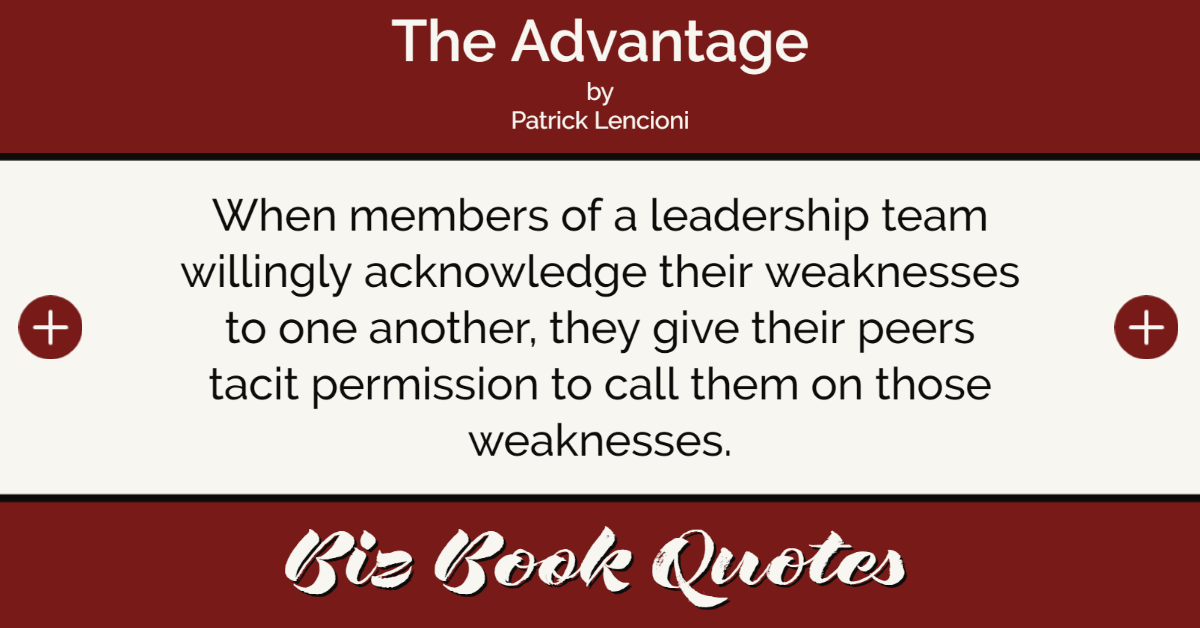 |
When members of a leadership team willingly acknowledge their weaknesses to one another, they give their peers tacit permission to call them on those weaknesses.
|
31 |
 |
The only way for teams to build real trust is for team members to come clean about who they are, warts and all.
|
35 |
 |
The only way for the leader of a team to create a safe environment for his team members to be vulnerable is by stepping up… first.
|
37 |
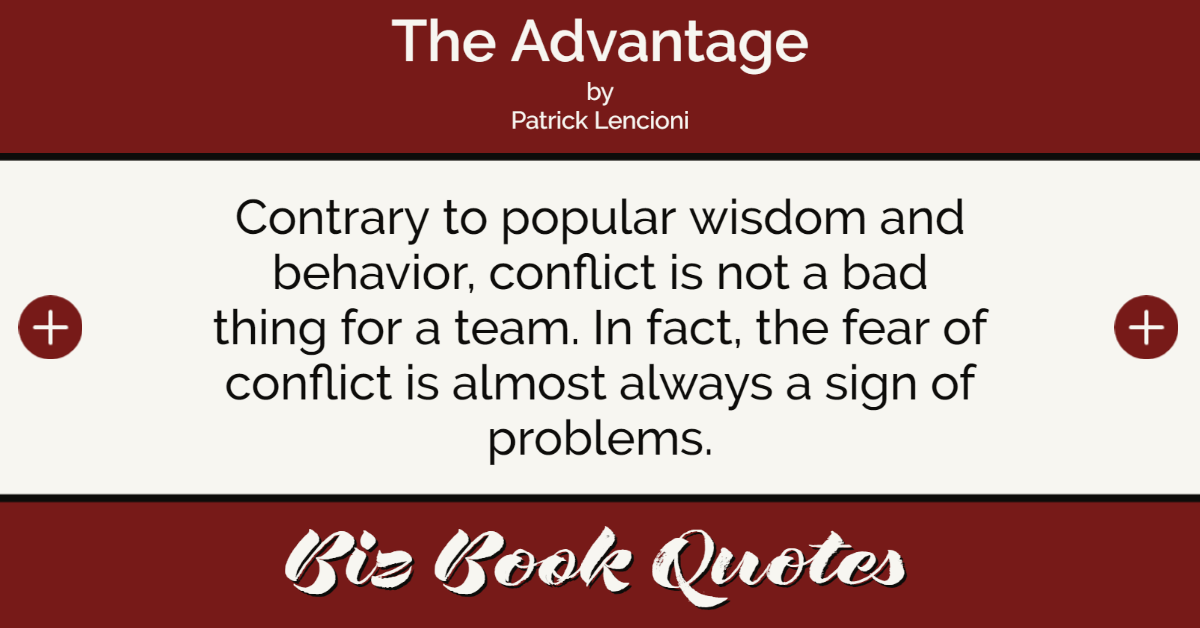 |
Contrary to popular wisdom and behavior, conflict is not a bad thing for a team. In fact, the fear of conflict is almost always a sign of problems.
|
38 |
 |
When there is trust, conflict becomes nothing but the pursuit of truth, an attempt to find the best possible answer.
|
38 |
 |
When leadership team members avoid discomfort among themselves, they only transfer it in far greater quantities to larger groups of people…
|
40 |
 |
…when team members aren’t comfortable being vulnerable, they aren’t going to feel comfortable or safe engaging in conflict.
|
47 |
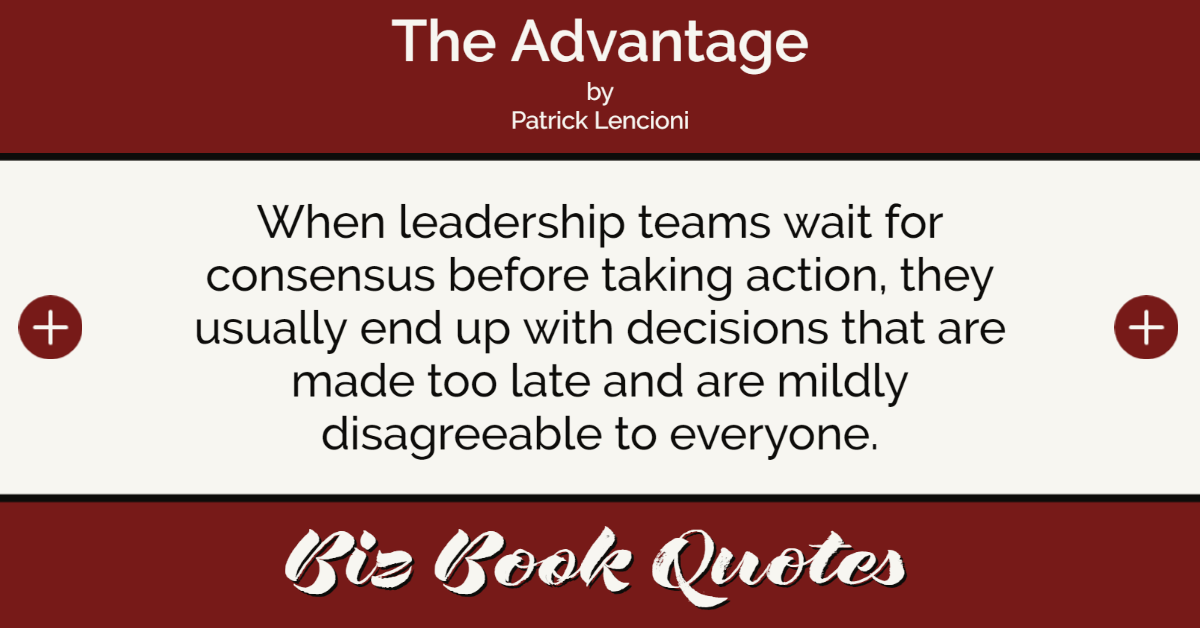 |
When leadership teams wait for consensus before taking action, they usually end up with decisions that are made too late and are mildly disagreeable to everyone.
|
48 |
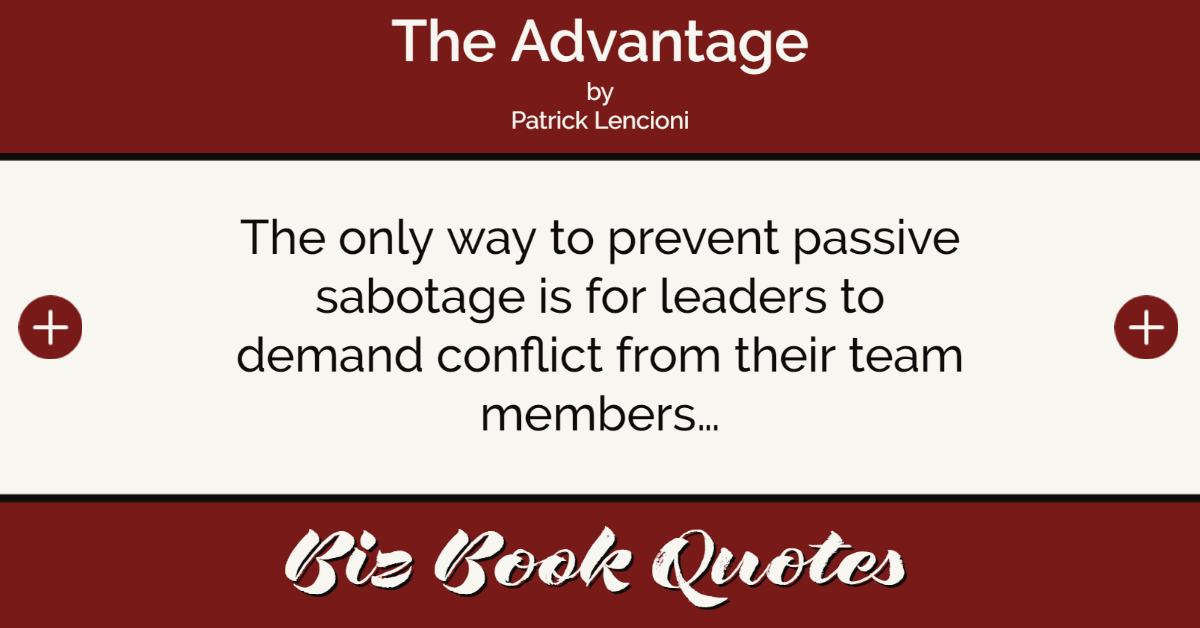 |
The only way to prevent passive sabotage is for leaders to demand conflict from their team members…
|
51 |
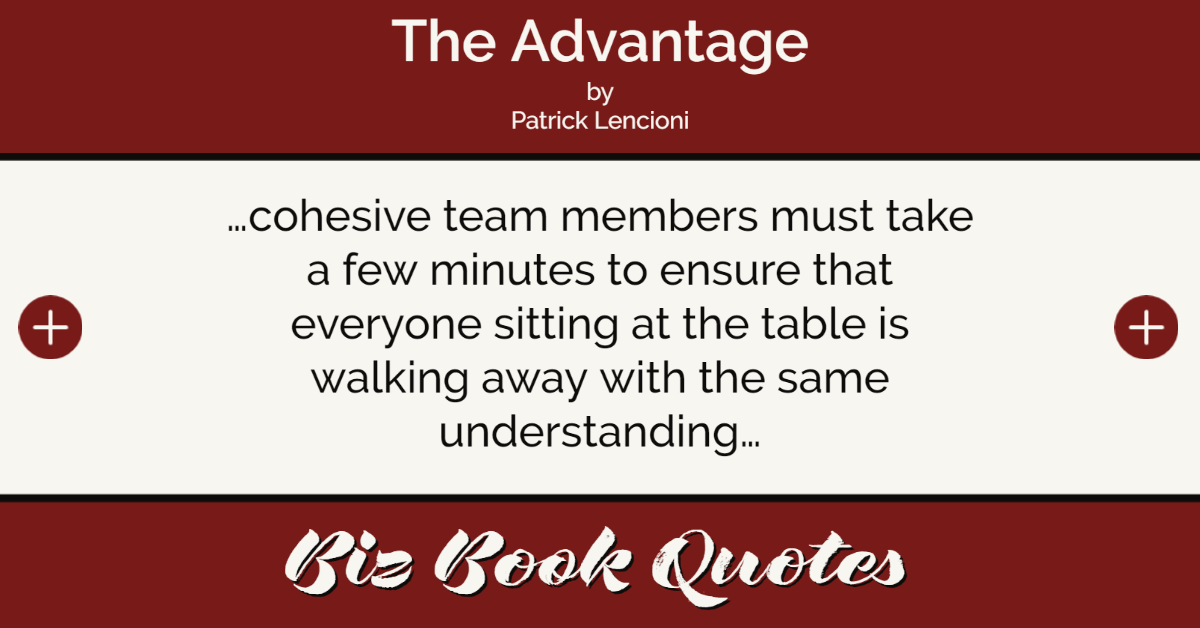 |
…cohesive team members must take a few minutes to ensure that everyone sitting at the table is walking away with the same understanding…
|
51 |